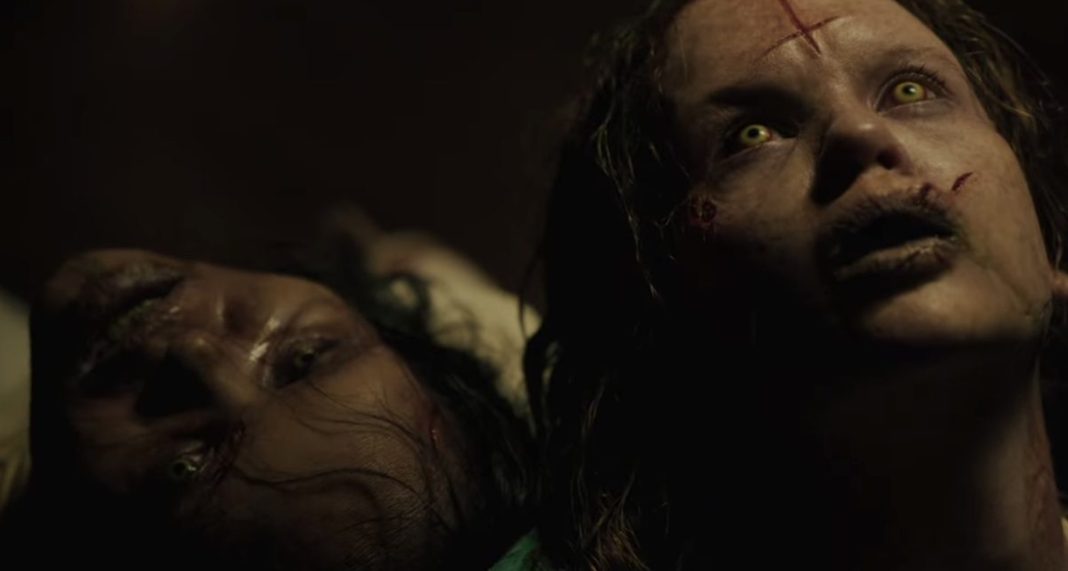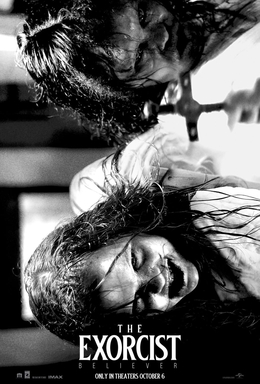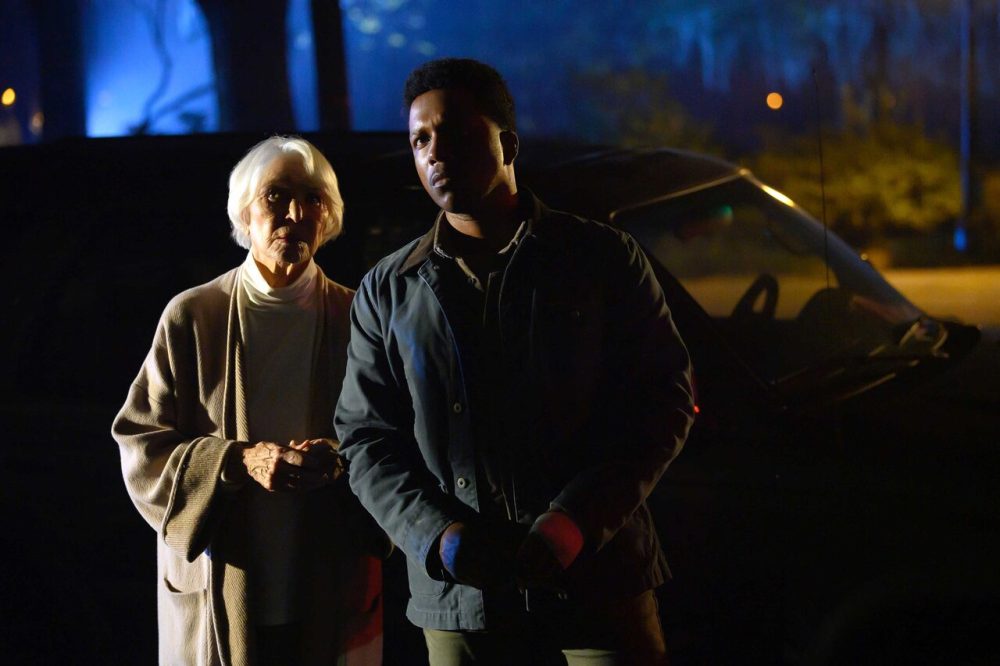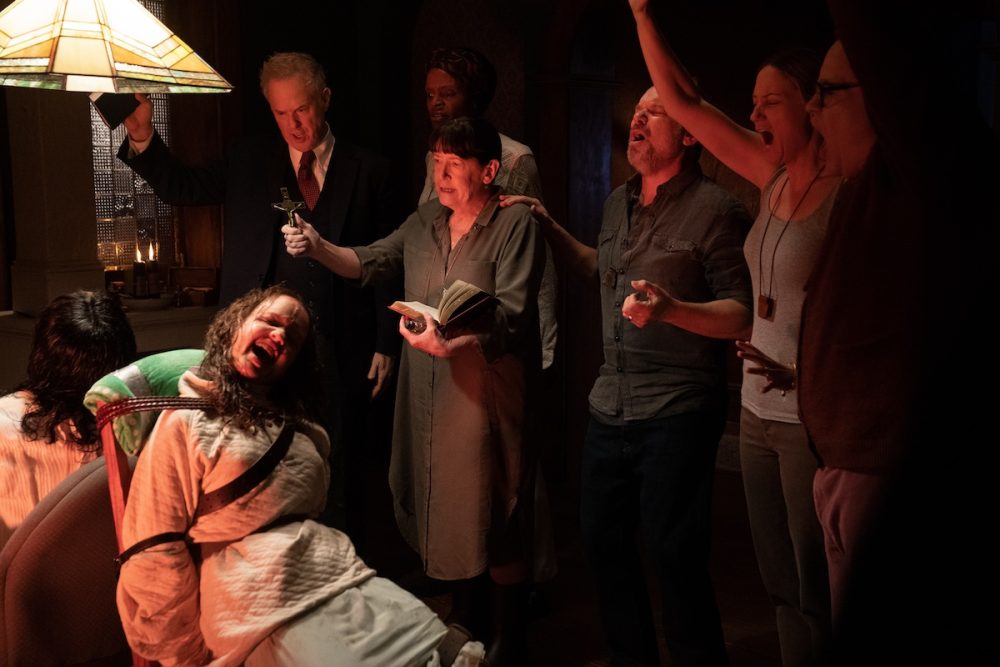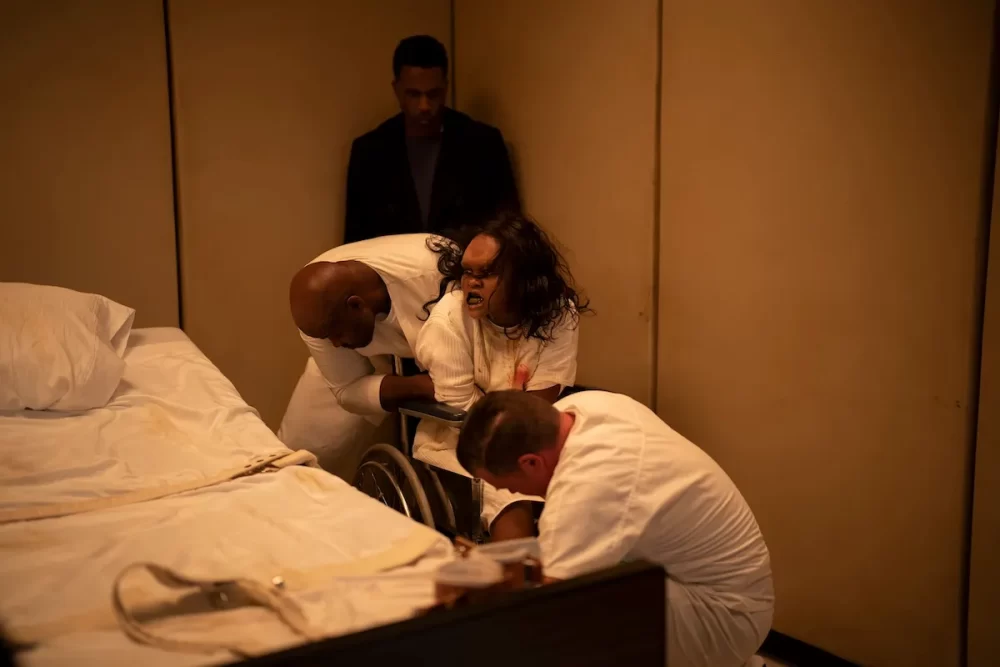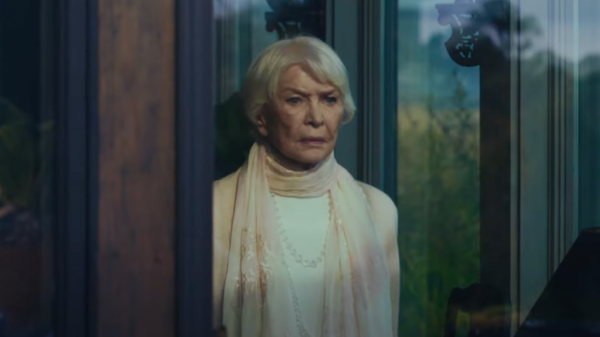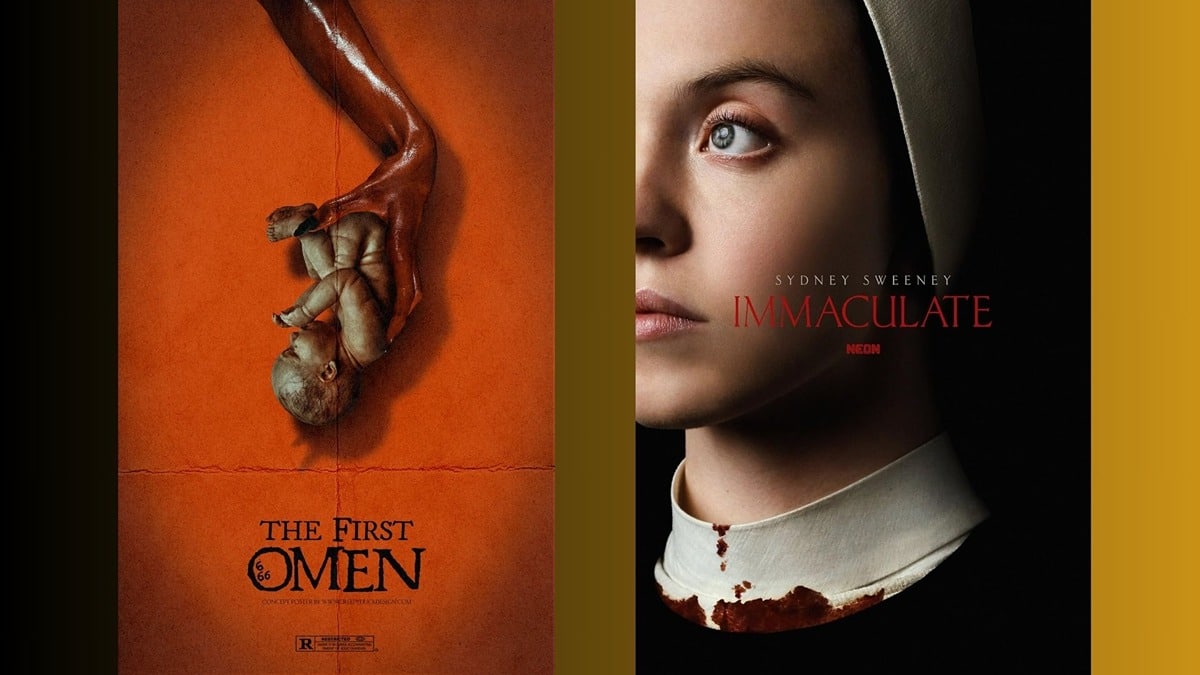One of my deepest fears upon watching the first trailer for The Exorcist: Believer, David Gordon Green’s stab at the franchise that’s part one of a trilogy, was that it looked like any other possession movie. For years, demonic possession movies have been taking the wrong ideas from the original movie, a classic directed by the late William Friedkin. Jump scares, green vomit and foul-mouthed kids became the order of the day in what came after The Exorcist back in 1973.
My fears came to fruition, unfortunately. Believer is a tensionless affair that also overlooks the deeper, more nuanced methods of Friedkin’s adaptation of the William Peter Blatty novel. It’s a slow and poorly scripted story that never does what the original did with open arms: invite the Devil in.
Taking a cue from his messy and widely inconsistent Halloween trilogy, Gordon Green approaches Believer as an expansion of the first movie in the franchise. This means that the exorcism of Regan MacNeil is a part of this world, justifying the inclusion of her mother Chris MacNeil as character in the movie (with Ellen Burstyn reprising her role).
Two girls go missing, this time around, prompting a townwide search that results in their retrieval. It becomes quickly apparent they came back with something demonic latched on to them, an evil that thrives on suffering. Victor Fielding, one of the girl’s parents (played by Lesley Odom Jr.), drives the story. He lives alone with his daughter Angela (Lydia Jewett) after her wife died in a tragedy while pregnant. Angela was saved, but not the mother. The movie emphasizes this part, coming back to the terrible choice Victor was forced to make between the life of his wife and that of his child. The other girl, Katherine (Olivia O’Neil), is less developed as a character and is ultimately more a means to an end for Angela. Her family’s experience with her possession is virtually nonexistent as Gordon Green decided to barely afford it screentime.
Here’s where those ideas and lessons the first Exorcist put forth as a blueprint for success start getting tossed out the window. Believer sticks most of the time to Odom Jr.’s character, the father looking to save his daughter. His journey takes him to places far away from his daughter. He’s mostly on his own for a big chunk of the film, meaning we don’t get to experience the horror and the ugliness of the demonic possession and how it affects those around them, the very thing that made the original so terrifying and emotionally wrenching. And there are two possessed girls this time around. The possibilities for new kinds of terror to form from this dynamic are squandered entirely.
As it stands, we only really get some of that signature possession horror in the last act, with an exorcism sequence that does produce some creepy imagery in the process. The circumstances that lead to the exorcism ritual, though, barely hold together for the duration of it. Here’s where the lack of a primary exorcist figure is sorely missed.
The final confrontation with the possessed Regan from the original felt momentous, like a clash of forces carried by a sense of buildup that came across as biblical in scope. It was a fight for an innocent girl’s soul. Believer does away with this in favor of a “community in crisis” metaphor that opens up the exorcist’s role so that multiple people from different belief systems can come together to save the two girls. It unravels in a very unfocused manner that robs the sequence of that epic quality Friedkin’s movie captured so well.
I understood the intent behind the communal exorcism idea, but Gordon Green and screenwriter Peter Sattler could’ve still gone the way of incorporating new types of exorcists from other backgrounds to elevate the tension leading up to the final confrontation, but they needed to give these exorcists the time to grow and justify their presence in the ritual. None of this happens, and it robs the movie of tension entirely.
The first Exorcist was, in a way, a supernatural procedural. Chris MacNeil, Father Karras, Lt. Kindermann (who later becomes the main character in The Exorcist III), and then Father Merrin all take a methodical approach to solving the impossible problem of Regan’s possession and the violence surrounding it. The parent figure in Believer, Victor, just goes from character to character getting lectured on belief and hope until he caves and accepts the need for an exorcism (and quite quickly at that).
And then comes Ellen Burstyn’s role, a cruel disservice to one of the best characters in horror history. Burstyn comes back to Chris MacNeil’s character (the same one that earned her an Academy Award nomination) for what ends up being one of the worst uses of a legacy character I’ve seen yet. After Regan’s exorcism, it’s revealed that Chris left her acting career behind to become an expert on exorcism. She’s written a book recounting her experience at the cost of alienating her daughter Regan.
In what’s another showing of an opportunity wasted, the movie goes on to turn Chris into a walking Wikipedia page for exorcism info dumps that culminates with a violent encounter with one of the possessed girls. And then we barely see her again. I thought that she was going to follow in the footsteps of Jamie Lee Curtis’s Laurie from the latest Halloween trilogy, commenting on the effects of trauma on survivors of extreme violence and horror, but she’s not even allowed that. Adding her to the story just felt like an afterthought, a lazy attempt at fan service to make fans connect this movie with the original one.
Finally, we have to talk about how much the absence of a strong religious center affected the storytelling behind Believer, down to the very concept of it. Now, I’m not going to say that exorcisms are only scary if they’re viewed from the lens of Catholicism. But, the Catholic element was an integral part of the original movies’ DNA, an indispensable part of its identity across the entire franchise. Removing that component and not replacing it with something of equal power or similar presence left a big hole that nothing the movie proposed even came close to filling.
Another religion or spiritual philosophy could’ve stepped in to take over the Catholicism of it all, but it needed to be afforded the time to make it believable within its world. In its absence, Gordon Green and Sattler denied the movie the chance to carve out its own myths, the kind that made the possession in the first Exorcist a brutal encounter between faith, fear, and belief. Instead, we get a “community can save the children” metaphor that doesn’t hold a candle to the original in any way.
There’s a scene in the movie where Chris MacNeil tells Victor that while she wasn’t present during the exorcism of her daughter, she was there for the entire possession. Without knowing it, Regan’s mom essentially pointed out the very problem that keeps Believer from being a good movie: failing to capture the life-altering effects of a demonic possession. Because of this, I can’t call Believer a possession movie. It’s an exorcism movie, and its capital sin is not earning that exorcism.


